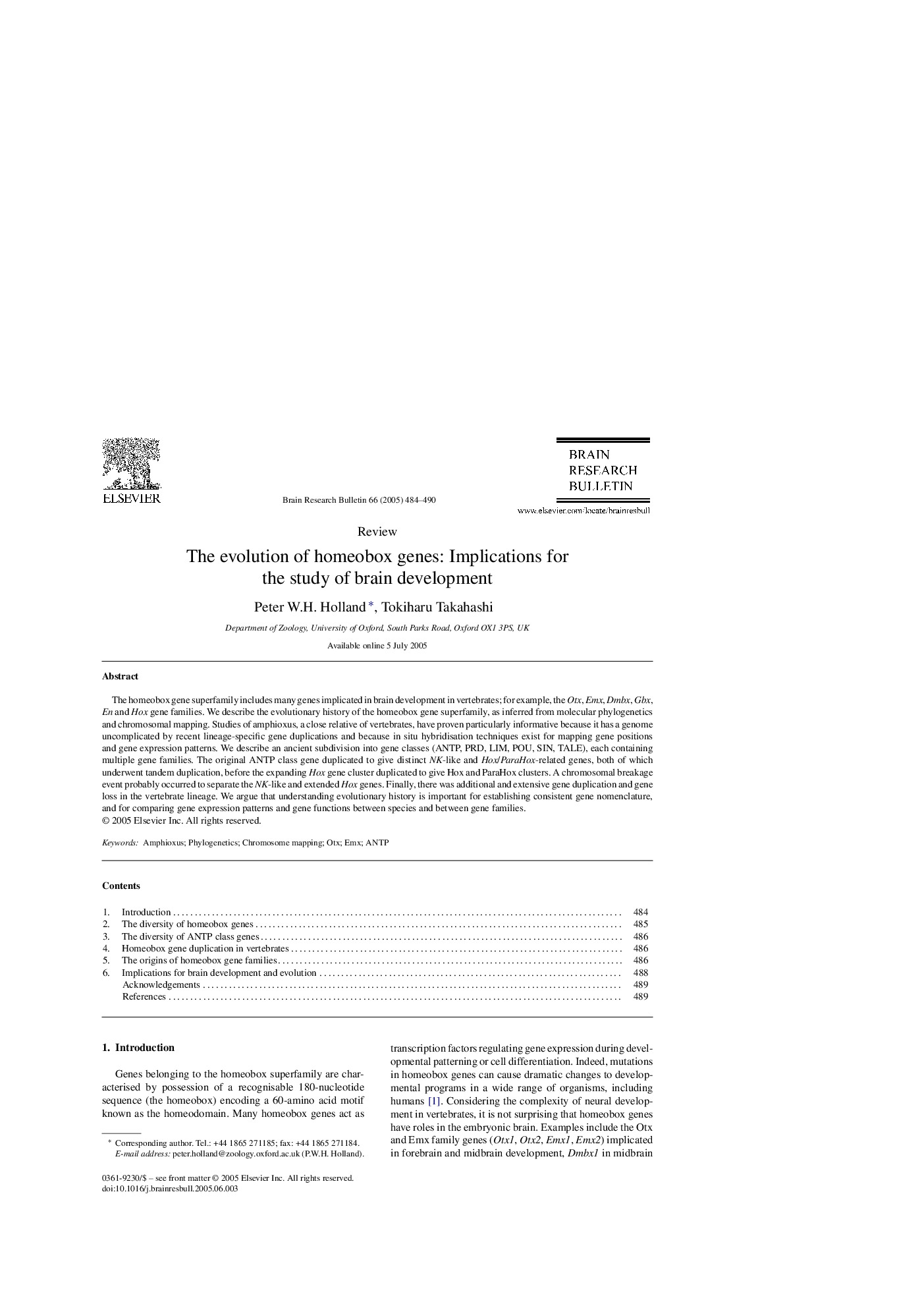| Article ID | Journal | Published Year | Pages | File Type |
|---|---|---|---|---|
| 9409449 | Brain Research Bulletin | 2005 | 7 Pages |
Abstract
The homeobox gene superfamily includes many genes implicated in brain development in vertebrates; for example, the Otx, Emx, Dmbx, Gbx, En and Hox gene families. We describe the evolutionary history of the homeobox gene superfamily, as inferred from molecular phylogenetics and chromosomal mapping. Studies of amphioxus, a close relative of vertebrates, have proven particularly informative because it has a genome uncomplicated by recent lineage-specific gene duplications and because in situ hybridisation techniques exist for mapping gene positions and gene expression patterns. We describe an ancient subdivision into gene classes (ANTP, PRD, LIM, POU, SIN, TALE), each containing multiple gene families. The original ANTP class gene duplicated to give distinct NK-like and Hox/ParaHox-related genes, both of which underwent tandem duplication, before the expanding Hox gene cluster duplicated to give Hox and ParaHox clusters. A chromosomal breakage event probably occurred to separate the NK-like and extended Hox genes. Finally, there was additional and extensive gene duplication and gene loss in the vertebrate lineage. We argue that understanding evolutionary history is important for establishing consistent gene nomenclature, and for comparing gene expression patterns and gene functions between species and between gene families.
Related Topics
Life Sciences
Neuroscience
Cellular and Molecular Neuroscience
Authors
Peter W.H. Holland, Tokiharu Takahashi,
